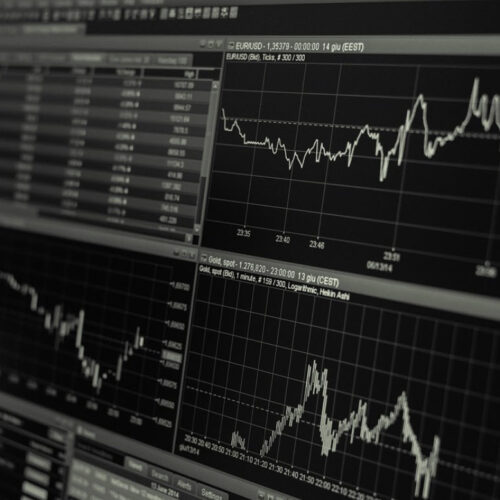What You Need to Know About Swing Trading and Day Trading
Are you looking for the best trading plan to help you get started or get better at trading? I know how you feel because I’ve been in your shoes. I searched for information for hours, watched a lot of videos, and even went to some workshops.
The trading world is very big, and it can be hard to find the right approach. Not to mention all the scams and fake gurus out there. If you don’t know what you’re doing, you’re just better off giving up and just buy some lottery tickets.
But today, I’ll make things easier for you by comparing Swing Trading and Day Trading, two of the most popular ways to trade. By the end of this article, you’ll have a better idea of which trading strategy fits your goals, trading style, and risk profile.
What is Swing Trading?
Swing trading is a type of trade where you keep your positions open for a few days to a few weeks. The main goal is to take advantage of “swings” or possible price changes in the market.
Along with fundamental research, swing traders often use technical indicators like moving averages, RSI, and MACD.
Let me show you how swing trading works with an example. Let’s say that you want to trade the EUR/USD exchange pair. When you look at the daily picture, you see that the price of the pair is going up.
You can also see that it has moved back and forth several times around the 50-day moving average (MA). You decide to buy EUR/USD when it crosses back over the 50-day MA. You put your stop-loss order below the 50-day moving average (MA), and you set your price goal at the previous swing high.
When EUR/USD hits the 50-day MA at 1.2000, you buy it. You set your loss limit at 1.1900 and your price goal at 1.2200. Your risk-reward ratio is 1, which means that for every standard lot, you risk $100 to make $200. After a week, EUR/USD hits your goal price, so you sell it and make a $200 profit. Great, you’ve just made a successful swing trade.
What is Day Trading?
When you day trade, you buy and sell financial items all on the same day. The goal is to make money off of small changes in price that happen throughout the day. Candlestick charts, volume, and trading indicators are all tools that day traders use all the time.
Here’s how day trading works in practice. Let’s say you want to buy and sell AAPL (Apple Inc.). When you look at the 5-minute line, you see that AAPL is going down. You can also see that a bearish pattern has formed near the 20-period moving average.
When AAPL breaks below the low of the descending triangle on the 5-minute candle, you decide to sell it. You put your stop-loss above the high of the engulfing candle and your goal price at the next support level. When AAPL breaks below the low of the expanding candle, you sell it at $150.
Your stop-loss price is set to $151, and your goal price is set to $148. Your risk-reward ratio is 1:2. This means that for every 100 shares you buy, you risk $100 to make $200. When AAPL hits your goal price after 30 minutes, you buy it back and make a cool $200 profit in just a short amount of time!
But Which Trading Style is Right for You?
Trading is a fun and interesting activity that can be customized to different personalities, tastes, and goals. You can choose a trading style based on how willing you are to take risks, how much time you have, and how skilled you are. Swing trading and day trading are two of the most well-known ways to trade. But what makes them different, and which one should you choose? There is no right or wrong answer here, you should choose the trading style that suits you.
Swing Trading: For the Patient Trader
Swing trading is a type of trading that lasts for a few days or weeks. The goal is to make money from big price changes in the market. Swing traders use different types of analysis, such as technical, fundamental, or a combination of the two, to find trading opportunities and decide when to buy and sell. They also use a lot of luck, hope, and prayer to avoid losing money. Don’t tell anyone, I did pray at one point!
Pros of Swing Trading
- Higher chance of making money: With swing trading, you can take advantage of bigger price changes, which can help you make more money per trade. You can also use leverage to make your profits bigger, but this makes your risk bigger as well.
- More time to analyze: Swing trading gives you more time to look at the market and plan your trades without having to rush or miss opportunities. You can also use different tools and indicators to help you make decisions and analyze things.
- Less market noise: Swing trading lowers your exposure to market noise and fluctuations that can lead to false signals or “whipsaws.” You can pay attention to the main trend and ignore small price changes that don’t affect the main trend.
Cons of Swing Trading
- Overnight risk: When you do swing trading, you are exposed to risk and uncertainty overnight because the market can move against your position while you aren’t looking at your screen. You may also see more slippage and volatility when the market opens and closes.
- Higher risk tolerance: If you want to do swing trading, you need to be willing to take on more risk and have a bigger account so you can handle bigger losses per trade. You may also need to use stop-loss and take-profit levels that are wider to account for price changes.
- Opportunity cost: There is more opportunity cost and capital inefficiency with swing trading because your money is locked up for longer periods of time and you may miss other trading opportunities. You may also have to pay more interest or swap fees if you keep your positions open overnight or over the weekend.
- External factors: Earnings reports, news events, and economic data are all external factors that can affect the way the market moves or how people feel about it. You need to be aware of these things and make trades that take them into account.
Swing trading may be right for you if you are a patient trader who likes a less hectic environment and can handle overnight risks.
Day Trading: Quick to the Draw
Day trading is a type of short-term trade in which positions are opened and closed within the same day. Day traders take advantage of small price changes in the market by using basic analysis, price action, or scalping. While this could be very lucrative, there are many traders who are like gamblers who bet on every move, hoping to make it big. Don’t be like them.
Pros of Day Trading
- Consistent profits: Day trading lets you take advantage of small price changes that can make you money every time you trade.
- No overnight risk: Day trading lets you close your positions before the end of the day, so you don’t have to worry about risk and exposure overnight. You don’t have to worry about market gaps, spikes in volatility, or swap fees that could affect your positions while you are sleeping or offline.
- Capital efficiency: When you day trade, you can use your capital more often and at any time, which makes it more efficient and flexible. When you’re not selling, you can also use your money for other things or chances.
- Less impact from fundamental factors: In day trading, fundamental factors and events have less of an effect because you can trade based on technical analysis and price movement alone. You don’t have to pay close attention to the news or economic data because they don’t affect your trades as much in the short run.
- Flexibility and variety: Day trading gives you more freedom and variety because you can trade different tools, markets, and time frames. You can also change from one strategy or method to another based on how the market is doing.
Cons of Day Trading
- Market noise: When you trade every day, you are exposed to market noise and changes, which can give you false signs or “whipsaws.” You might have to deal with high-frequency traders, automated traders, or market makers who can move prices in their favor.
- Smaller profit potential: Day trading has a smaller profit potential because you have to be willing to take on more risk and have a bigger account to meet the minimum equity requirement and use intraday leverage. You may also need to use tighter stop-loss and take-profit levels to protect your gains from price reversals.
- Higher commissions: When you trade every day, you have to pay more commissions and fees, which can cut into your profit. For each sale you make, you may have to pay more in spreads, commissions, or transaction costs.
- Time commitment: Day trading takes more time and focus because you have to stay in front of your screens and act quickly for the whole trading session. You may also have to keep an eye on more than one market, tool, or indicator at once.
- Emotional stress: Day trading makes you feel more tired and stressed out because you have to deal with your feelings and control yourself. During trading hours, you might feel afraid, greedy, angry, frustrated, or bored. You might also have to deal with the mental effects of making or losing a lot of money quickly.
Day trading might be perfect for you if you are a quick thinker who does well in fast-paced and high-pressure situations and can make decisions in the blink of an eye, like a gunslinger in the Wild West.
Choose Your Trading Style Wisely
Day trading and swing trading are both popular ways to trade, and each has its own pros and cons. You can’t say for sure which one is better because it depends on your own preferences, goals, and means.
You should choose a trading style that fits your mindset, how willing you are to take risks, how much time you have, and how good you are at trading. Before you put real money into it, you should also test and practice your investing style. You can do this with the help of a demo account or a paper trade account.
Also, look over your results and performance often and learn from both your wins and failures. Trading is a way to make money that takes a lot of patience, discipline, and coffee. And in some cases, tears. Er, I might have overshared here.
How 247trading Can Help You
247trading is ready to help you reach your trading goals, no matter what trading style you choose.
We have reviewed for your convenience all the top funded trader programs available in the market now, and the best trading education programs as well that can jump-start your trading career. Or at the very least, make you less clueless.
We have all the resources you need to begin trading forex, stocks, commodities, markets, or cryptocurrencies. All you have to do is make that next step. Sign up for 247trading’s newsletters now, and let us guide you through as you start your trading career.



